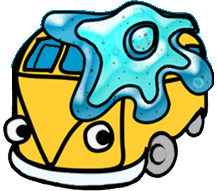Protozoans and Small Animals
When you look at fresh water with a microscope you will likely see a variety of tiny living things. Sources of fresh water samples can include ponds, lakes, rivers, aquarium tanks or even an old rain puddle.
You might see bacteria which belongs to the Kingdom Monera. You likely will see tiny animals like rotifers which belong to the Kingdom Animalia and of course, there are the Protozoans and Algae which belong to the Kingdom Protista. The algae are single celled plant-like protists and the protozoans are single celled animal-like protists. Remember, the Protists are neither animals or plants but in a Kingdom of their own!
Scientists estimate that there are over 50,000 different species of protozoans. Even at that, there are many new protists yet to be found as new species that are identified regularly. Take a look at some info on Actinophrys Protists here.
Find below links to images and descriptions of some common fresh water critters that you might encounter in your investigations with a compound microscope (high power). Click on the small image to go to a page of that group. If you are trying to identify a particular protozoan, first determine how it moves then search the corresponding section below. When looking through the microscope at bacteria or protozoans, start at the lowest magnification to focus, then move up to 400x to view your samples. (Note: All images are copyrighted and cannot be used without permission.)
If you find the information on this site valuable, we suggest you link to it from your website so others may easily find it. For microscopes, click on the “Microscope suppliers” link at the left.
Phylum Ciliophora
Often cilia are fused together in rows or tufts (called cirri) and are used for special functions such as food gathering. In addition to locomotion, the Paramecium uses cilia to sweep food down into it’s central channel or gullet. Other ciliates include the Stentor, Blepharisma, Bursaria, and Vorticella. View more Ciliophoroa here.
Phylum Mastigophora
Phylum Sarcodina
Multicellular Animals
Microscopic Critters
View microscopic critters that you can find in pond water or even in a rain puddle!
Pond Dipping
Concentrate the critters found in pond water. Pond dipping refers to dipping an empty jar into the pond and finding plenty of water to study, but sometimes the catch is not concentrated enough since you only use a single drop on a slide. This article explains how to concentrate a catch.




